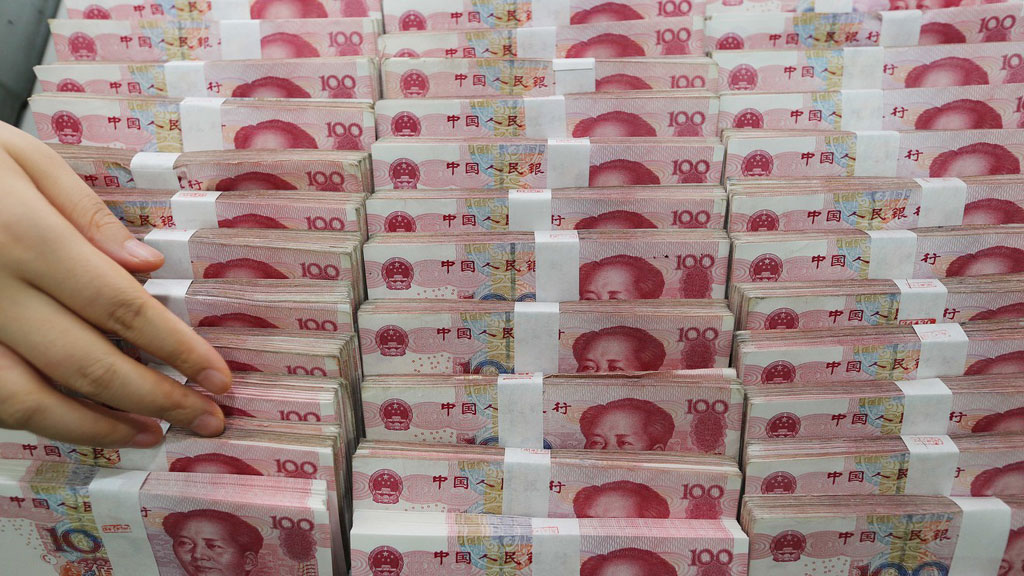 SHANGHAI/HONGKONG: Investors are betting that the powerful forces of easier monetary policy at home and unrelenting gains in the US dollar will push China's yuan down, even as Beijing categorically insists that it isn't pursuing currency depreciation.
SHANGHAI/HONGKONG: Investors are betting that the powerful forces of easier monetary policy at home and unrelenting gains in the US dollar will push China's yuan down, even as Beijing categorically insists that it isn't pursuing currency depreciation.
The yuan, or renminbi, is already down 10 percent against the dollar since March, when the first round of tit-for-tat tariffs in the US-China trade war was announced.
However, the tightly managed currency is just slightly weaker than its peers in trade-weighted terms, and the People's Bank of China (PBOC) has been at pains to ensure its daily benchmarks don't signal a preference for a weaker yuan.
But as investors wait to see if China is labelled a currency manipulator in a US Treasury report due this week, and as PBOC Governor Yi Gang reiterates Beijing's determination to keep easing policy, they are also betting the yuan is heading for the key 7-per-dollar level - about a percent weaker than its current one.
Offshore yuan forwards and yuan options show currency market participants are wagering on the currency creeping to 7.00 or lower, last seen during the 2008-2009 global financial crisis.
Ken Cheung, senior Asian FX strategist at Mizuho Bank, said the PBOC "has not come up with a hawkish stance so far to support the exchange rate, unlike in 2015 and 2016, when they repeatedly said they didn't see the basis for further depreciation."
"Back then, people doubted the PBOC's capability to stabilise the yuan, but they didn't doubt their willingness to do it," he said. "This time, it's the other way around. Their strategy is to guide the renminbi lower with the daily fixing."
The past year has seen China softening a campaign to wean the economy off debt, and easing monetary conditions in the face of slower growth and sharp stock market declines.
It is a marked shift from the 2015-2016 yuan sell-off, when Beijing ramped up capital controls and interest rates to support the currency.
POSITIONING NOT EXTREME YET
The PBOC governor has said China would keep the yuan's value "broadly stable", but that it would "continue to let the market play a decisive role in the formation of the yuan exchange rate."
Yi said that China "will not engage in competitive devaluation, and will not use the exchange rate as a tool to deal with trade frictions."
One-year non-deliverable yuan forwards contracts (NDFs), seen as the best indication for market expectations of the yuan's value, traded on Tuesday at 7.02, about 1.2 percent weaker than current levels.
In the options market, risk reversal spreads, which show the extent of bias in the market, held near their highest levels since early 2017 in favour of dollar call options, suggesting investors were paying a hefty premium to bet on the yuan falling.
But Jack Siu, senior Asia-Pacific investment strategist at Credit Suisse, points out that while the bearishness evinced in yuan options was near its highest point since early 2017, the bias for weakness was still far less than in early 2016.
"Falling through 7 if the US dollar strengthens against other currencies would not be over-the-top," Siu said.
While short-term uncertainties may drive the yuan beyond 7, Credit Suisse sees the currency steadying at 6.95 in 3 months, and recovering to 6.85 in a year's time.
Naoto Saito, chief economic researcher at Daiwa Institute of Research in Tokyo, said the yuan's weakness was more a function of the dollar's strength.
"I know some people say China must defend the yuan at 7 per dollar but I disagree. There's no point worrying about the yuan going below 7," he said.

















Comments
Comments are closed.